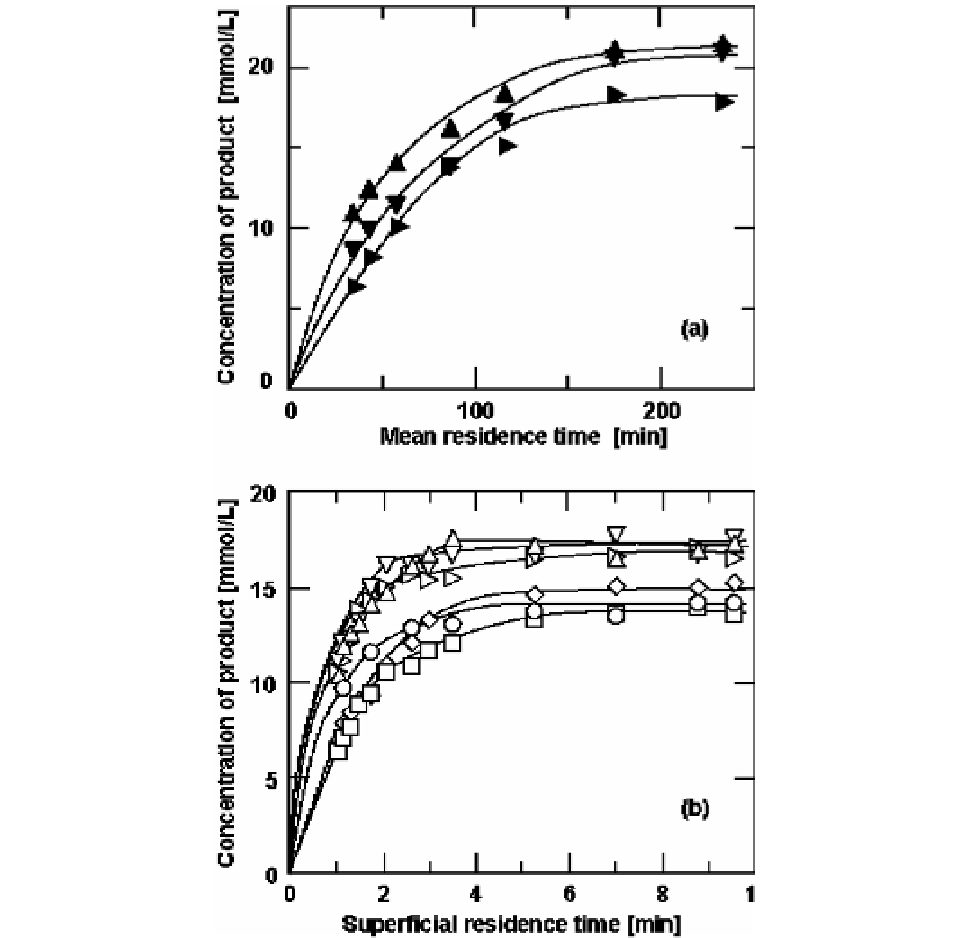Biomedical Engineering Reference
In-Depth Information
Figure 6. (a) Relationship between the mean residence time,
τ
, and the concentration of (
S
) decanoyl,
(
T
) lauroyl or (
X
) myristoyl ascorbate in the CSTR at 50
o
C. (b) Relationship between the superficial
residence time,
τ
, and the concentration of (
{
) arachidonoyl, (
) oleoyl, (
) linoleoyl, (
U
) decanoyl,
(
V
) lauroyl or (
Z
) myristoyl ascorbate using the PFR at 50
o
C. In both reactor systems, the fatty acid
concentration in the feed was 200 mmol/L. The curves were empirically drawn.
fed to the column packed with ascorbic acid through the pre-heating coil (1.0 mmφ ×
ca.
1.0
m) and then to the immobilized-enzyme column at a specified flow rate. The pre-heating coil
and columns were installed in a thermo-regulated chamber at 50
o
C. In each reactor, the
effluent was sampled after a steady-state was achieved. The product concentration in it was
determined using an HPLC.
A fatty acid solution was fed to the CSTR with Chirazyme
®
L-2 C2 at various flow rates,
and the concentration of acyl ascorbate in the effluent was observed after a steady-state was
attained. The concentration of fatty acid in the feed solution was 200 mmol/L, since it gave
the maximum concentration of the product. The relationships between the mean residence
times in the reactor, τ, and the concentrations of the decanoyl, lauroyl and myristoyl

